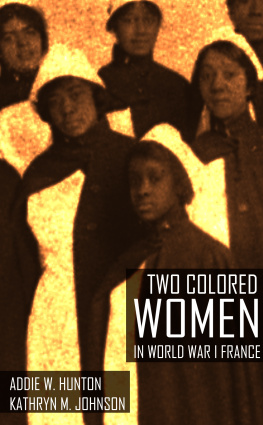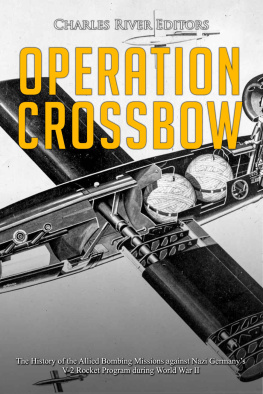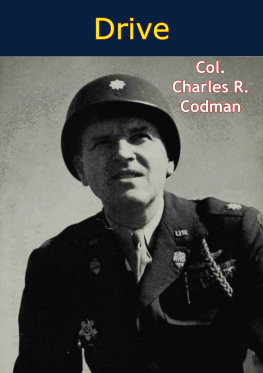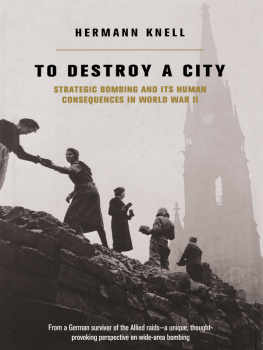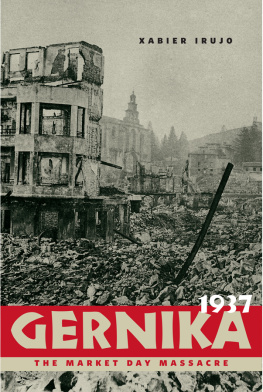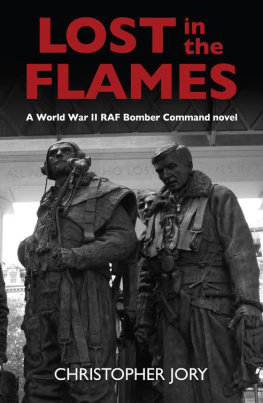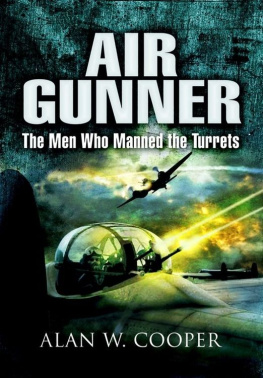This edition is published by PICKLE PARTNERS PUBLISHINGwww.pp-publishing.com
To join our mailing list for new titles or for issues with our bookspicklepublishing@gmail.com
Or on Facebook
Text originally published in 1937 under the same title.
Pickle Partners Publishing 2016, all rights reserved. No part of this publication may be reproduced, stored in a retrieval system or transmitted by any means, electrical, mechanical or otherwise without the written permission of the copyright holder.
Publishers Note
Although in most cases we have retained the Authors original spelling and grammar to authentically reproduce the work of the Author and the original intent of such material, some additional notes and clarifications have been added for the modern readers benefit.
We have also made every effort to include all maps and illustrations of the original edition the limitations of formatting do not allow of including larger maps, we will upload as many of these maps as possible.
CONTACT
BY
CHARLES CODMAN
Chapter I
ON THE morning of May 18, 1918, ten old Breguets that had seen better days were lined up on the field at Clermont-Ferrand, Puy de Dme, France. Our mercurial C.O., Major Harry K. Brown, A.S., U.S.A., swung himself into the cockpit of the leading plane. His observer 1 st Lieut. Howard Rath did likewise. Nine other pilots and observers followed suit in their respective machines.
Contact?
Contact.
Ten propellers were swung (there were no self-starters in those days), ten 300 H.P. Renault motors clattered and hummed, and a few minutes later the 96 th Aero Squadron, First Day Bombardment Group had graduated from school and was headed towards the Front.
A pleasant place, Clermont. Quite an improvement over Essington, Pa., as Gardie Fiske justly ob-served. Essington had been our first camp. There, as lowly Flying Cadets, we had spent the sizzling summer months of 1917 learning the gentle arts of oiling, greasing, ditch-digging, and Guard Duty. Armed to the teeth with Springfield rifles and resounding passwords, we nightly paced the steaming banks of the Delaware, holding the camp against imaginary foes. Clad in rubber boots, gauntlets, and head-nets, we marched our posts in a military manner and nightly waged a losing battle against the giant mosquitoes that rose in clouds from the surrounding swamps. By day, if we were very good, we were occasionally allowed short teetering flights in antiquated Flying Boats. Why Boats, no one knew for a certainty, but, for that matter, why had land planes been issued to the students at the Naval School down the river?
November 2, 1917 saw us on board the Transport Kroonland bound for France. More Guard Duty, only here it was called Lookout Duty. The only point of the game was to avoid being caught smoking during the night watches. The glow of a cigarette would attract whole schools of submarines, they told us. Once a whale emerged alongside and got badly shot up. No submarines.
Liverpool,the Adelphi Hotel. A cold dismal night train to Southampton. A channel transport. A channel gale. A crossing so rough that two life boats and half the deck rail were washed away. No Guard Duty however. At last the breakwater at Havre. Never had the sight of Frascatis been more welcome. A bottle of Pinard at the railway station, the effeminate yet positive shriek of a French locomotive, the individual rhythm of a French coach, the neat orderly landscape of Normandy with its symmetrical haystacks. It was good after an absence of a year and a half to be back again. Now we should get more flying and less Guard Duty. Wrong again.
Issoudun, the training center for Pursuit Pilots. A sea of frozen mud. Waiting in a shivering line before dawn for the spoonful of gluey porridge slapped into outstretched mess-kits, cold as ice. Wretched flying equipment. Broken necks. The flu. A hell of a place, Issoudun. More and longer Guard Duty. Latrine digging. This, at least, constructive. It had a kind of functional dignity. The burial squad used dynamite for the graves, but our latrines were all hand-work. We got pretty skillful at it, and took quite a pride in the finished job. It broke our spirit though when one of our finest pieces of work, a six-holer, and brand new, was al-located to the use of the German prisoners who did odd jobs around the camp.
At the psychological moment Walker Ellis dropped in on some mission or other with a flight of Breguets. How sturdy and reliable they seemed compared to our flimsy little Nieuports that had a way of losing their wings. He spoke in glowing terms of Clermont-Ferrand and its new school of Precision Bombing. A fascinating and useful science he assured us. Moreover the food was superior, he said, and the treatment liberal. Very little Guard Duty and no latrine digging whatsoever. That settled it. Our sales resistance to Precision Bombing could not have been lower. It sounded good to us. More than good. A little wangling (Quentin Roosevelt put in a good word) and two weeks later a small group of kindred souls shook the mud of Issoudun from their feet and entrained for Clermont via Paris.
Except in matters of detail, Paris hadnt changed much from the previous war years. Most of the Lafayette boys and other genial spirits who formerly had foregathered at the Chatham Grill now met at the Crillon Bar. Here on this particular evening were already assembled John Munroe and Jack Clark, both with the French Artillery; Bunny Carter, of the contagious laugh,also attached to the French; Howard Sturges, one of the few people in the world who can peer nearsightedly in an engaging manner; Cole Porter, commuting each evening from the Artillery School at Fontainebleau; and of course Steve Bigelow. No matter where the Lafayette Squadron was stationed, Steve always managed to make the Crillon Bar by 6 p.m. We all dined very well somewhere,probably Larues. Then to Coles apartment where he played and sang. Champagne. More people came in. It was the Edwina epoch:
Depuis le jour que je suis alle en Amrique
Je crie toujours ces drles petits chansons dAfrique
and Irving Berlins Sweetie
In Tiffanys window shes a jewel,
I know that youll
Agree.
It got late and eventually Coles limousine wafted him off to Fontainebleau for his daily bout with the 75s. Some of the boys called it a day. The rest of us moved on. Supper with Mme. Hlne in her kitchen. Fresh butter and eggs and white bread. More champagne. Serious talk about life. Finally bed. Clean white sheets for the first time in months. Oblivion.
The minute we hit Clermont we knew we had guessed right. The city was friendly and the flying field, some twenty minutes distant, spacious and cheerful in its mountain setting. The nearby Michelin plant, home of Bibendum and of Breguet planes, had definite personality. The great munition works across the railroad, Les Gravanches, whose gates each evening belched forth a horde of workers, men and girls, dyed to a deep saffron hue by picric and sulphuric acid, lent a picturesque touch, and made one feel that a war was going on. We were warned never to fly over or near Les Gravanches since a crash within its precincts would mean a first degree catastrophe. Indeed the experts had worked it out that were Les Gravanches to be touched off, the ensuing explosion would not only instantly wipe out our field, the Michelin factory, and the entire city of Clermont-Ferrand, but also reduce several square miles of the surrounding countryside to a steaming black hole. Perhaps they exaggerated but we had a healthy respect for Les Gravanches.




